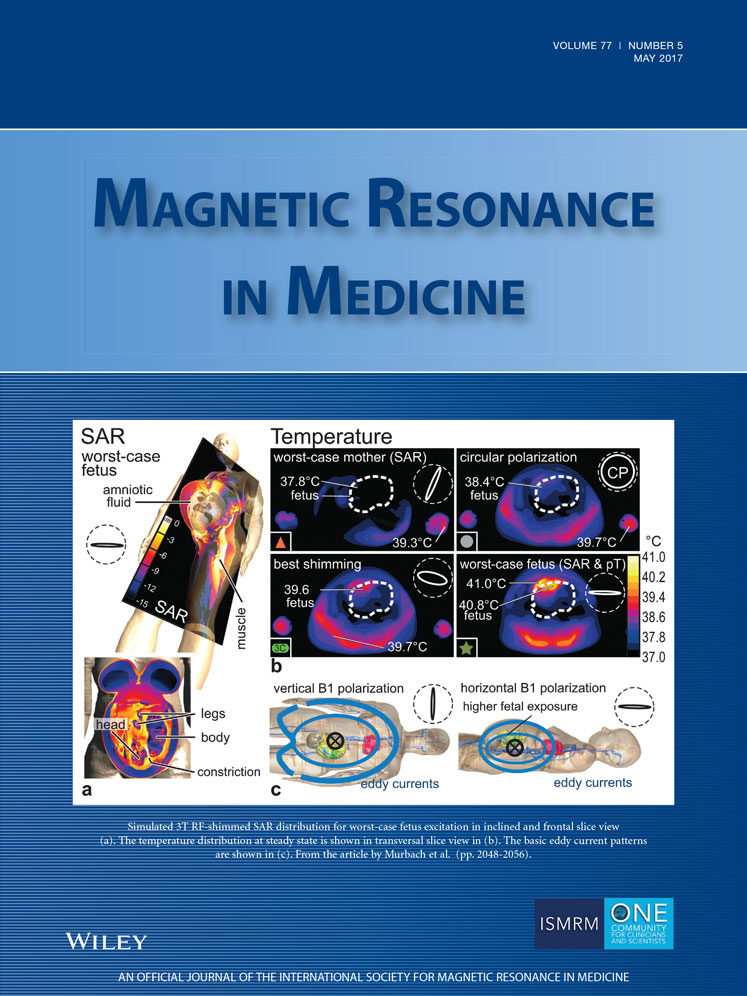Resolving phase ambiguity in dual-echo dixon imaging using a projected power method
Portions of this work have been accepted for presentation at the 24th Annual Meeting of ISMRM in 2016.
Conflict of Interest: Tao Zhang, Marcus Alley, John Pauly, Brian Hargreaves, and Shreyas Vasanawala have research collaboration with GE Healthcare.
Abstract
Purpose
To develop a fast and robust method to resolve phase ambiguity in dual-echo Dixon imaging.
Methods
A major challenge in dual-echo Dixon imaging is to estimate the phase error resulting from field inhomogeneity. In this work, a binary quadratic optimization program was formulated to resolve the phase ambiguity. A projected power method was developed to efficiently solve the optimization problem. Both the 1-peak fat model and 6-peak fat model were applied to three-dimensional (3D) datasets. Additionally, the proposed method was extended to dynamic magnetic resonance imaging (MRI) applications using the 6-peak fat model. With institutional review board (IRB) approval and patient consent/assent, the proposed method was evaluated and compared with region growing on 29 consecutive 3D high-resolution patient datasets.
Results
Fast and robust water/fat separation was achieved by the proposed method in different representative 3D datasets and dynamic 3D datasets. Superior water/fat separation was achieved using the 6-peak fat model compared with the 1-peak fat model. Compared to region growing, the proposed method reduced water/fat swaps from 76 to 7% of the patient cohort.
Conclusion
The proposed method can achieve fast and robust phase error estimation in dual-echo Dixon imaging. Magn Reson Med 77:2066–2076, 2017. © 2016 International Society for Magnetic Resonance in Medicine



 estimation with multifrequency fat spectrum modeling
estimation with multifrequency fat spectrum modeling
